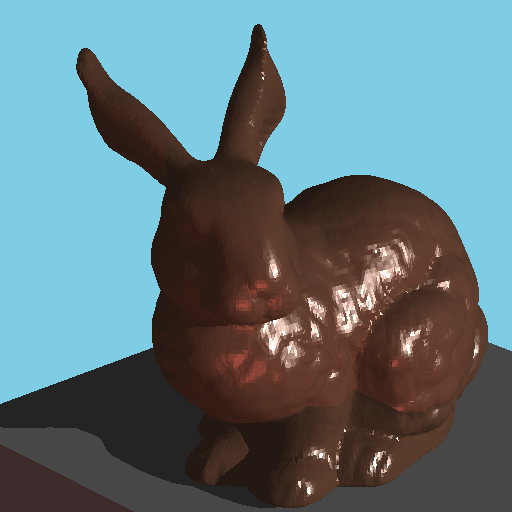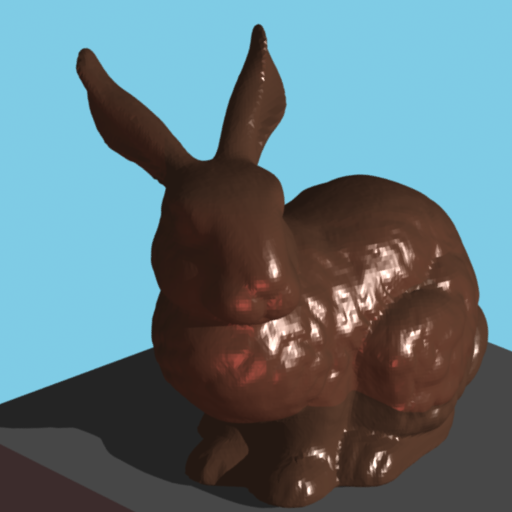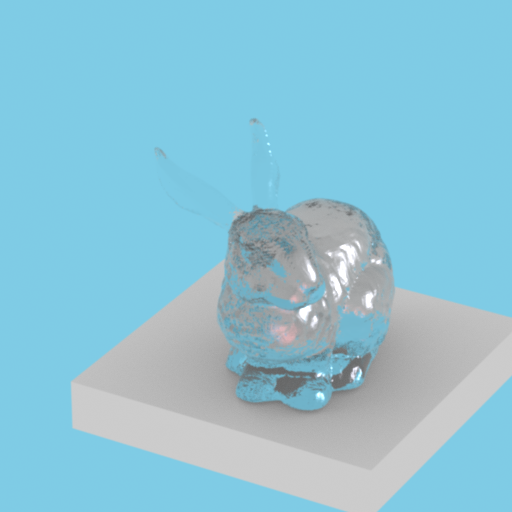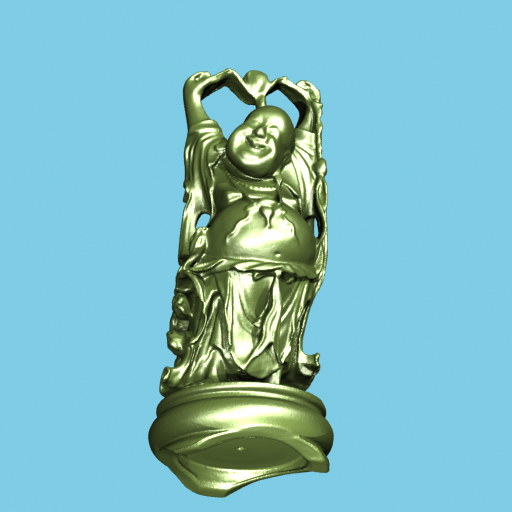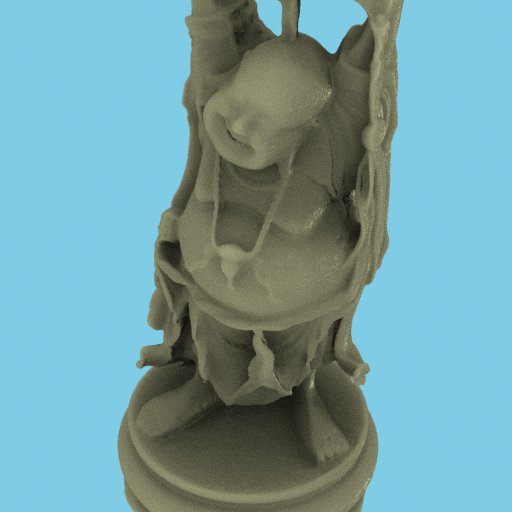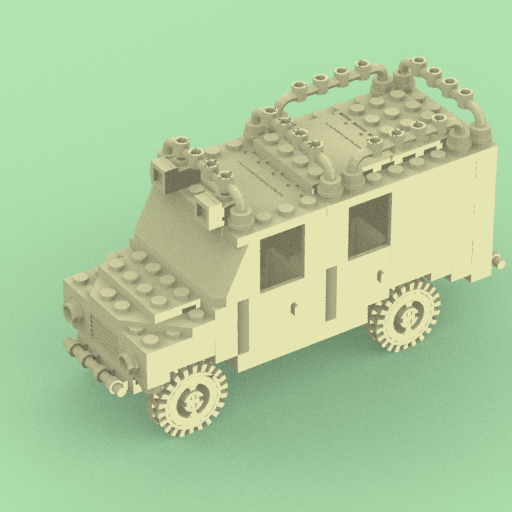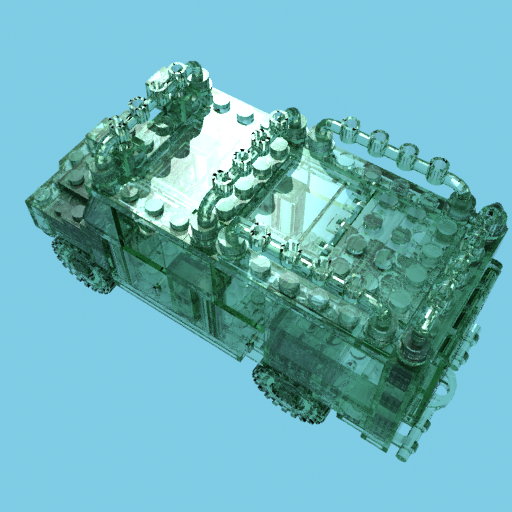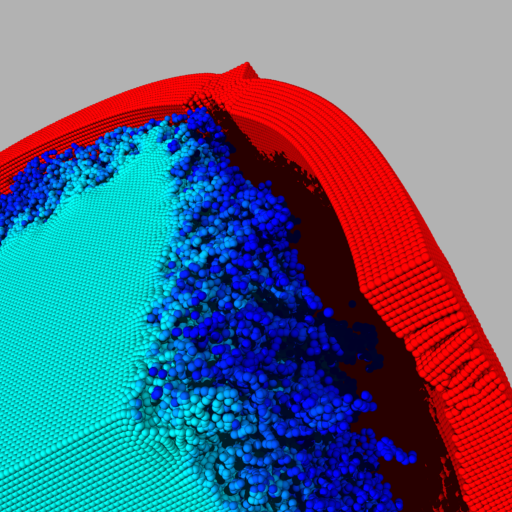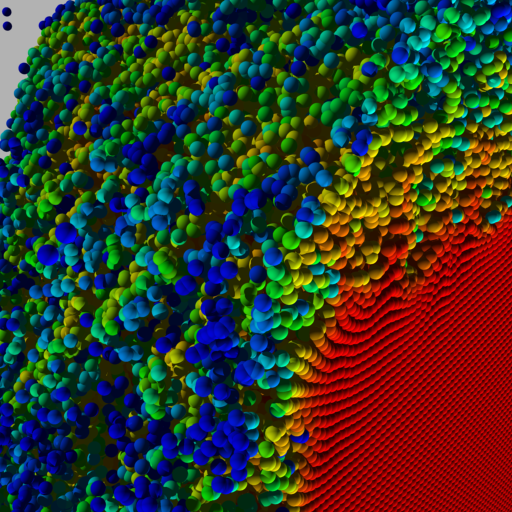This is a closeup of
the JP8 dataset (approx 1.1M particles). I have color mapped it with
invrain16.nrrd colormap using the first scalar value. This uses a
Lancos Sinc filter, 3spp width 2.
With a BVH and 1spp box filter, this image renders in 2.08981 sec.
Render time with a grid is around 1.5304 sec. I didn't spend a great
deal of time improving the performance with these data sets since I
work with them on a regular basis.
|
This is the HMX
dataset containing around 800,000 particles. I've applied the same
colormap as before. This image is 5spp with a Lancos Sinc filter width
2. The performance viewing the extents of the model, rather then
the details provided much better performance, even though more geometry
was visible.
|
